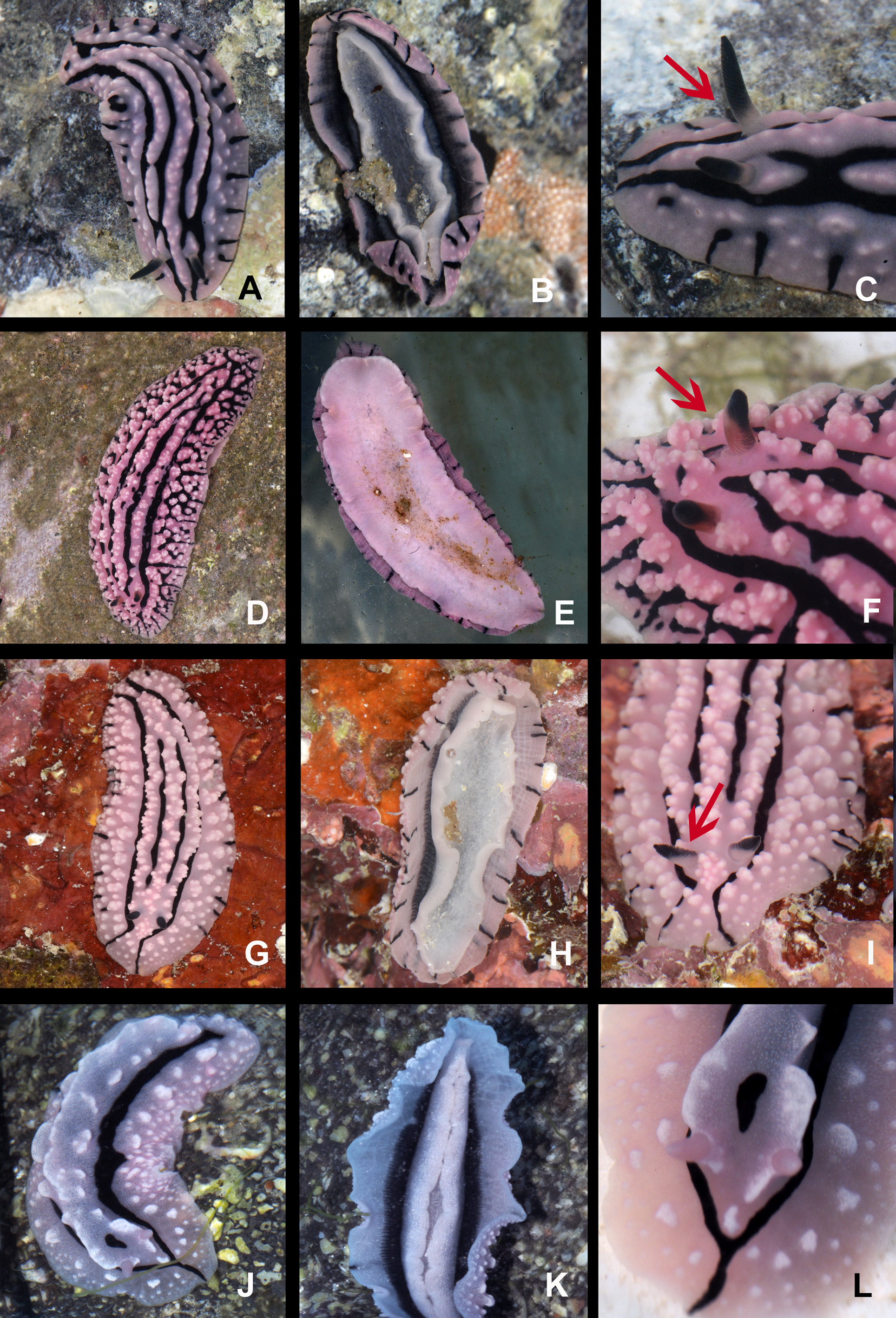Dendrodoris krusensternii ( Gray, 1850 )
|
publication ID |
https://doi.org/10.11646/zootaxa.4359.1.1 |
|
publication LSID |
lsid:zoobank.org:pub:8D06174D-B19F-4B5C-B9B0-DA74E6D43C75 |
|
DOI |
https://doi.org/10.5281/zenodo.6026058 |
|
persistent identifier |
https://treatment.plazi.org/id/03EB87A2-FF93-FFC7-9790-FBBEFD8DF955 |
|
treatment provided by |
Plazi |
|
scientific name |
Dendrodoris krusensternii ( Gray, 1850 ) |
| status |
|
Dendrodoris krusensternii ( Gray, 1850) View in CoL
( Figure 22 J–L View FIGURE 22 , 23 A View FIGURE 23 )
Material examined. Four specimens. MHN-YT83, ZRP, 10 Dec. 2011, 2m, 35mm; MB28-004727, PCR, 15 Aug. 2013, 0.5m, 41mm; MB28-004728, PACG, 15 Aug. 2013, 0.5m, 36mm; MB28-0 0 4839, POB, 0 9 May 2014, 18m, 35mm.
Habitats. Subtropical tidal reefs and rocky reefs.
Occurrences. Ponta do Ouro, Zavora and Paindane.
Geographic distribution. Indo-west, central Pacific. Hawaii ( Gosliner 1987), Midway Atoll (Gosliner et al. 2008), Japan ( Baba 1949), Australia ( Angas 1864), Korea, Papua New Guinea, New Caledonia, New Zealand, Philippines, Indonesia, Singapore, Thailand, Réunion Island (Gosliner et al. 2008), South Africa ( Gosliner 1987) and Mozambique ( Macnae &Kalk 1958; King & Fraser 2014).
Remarks. Two distinguished morphotypes were found in Mozambique and require further investigation. One morphotype has a purple dorsum with elevated tubercles ( Fig. 22 J View FIGURE 22 ) and a purple foot ( Fig. 21K View FIGURE 21 ) whereas the second is brown with a white patch on the dorsum ( Fig. 22 L View FIGURE 22 ) and a brown ventral surface with a yellow margin ( Fig. 23 A View FIGURE 23 ). According to Valdés & Fahey (2006) it is not clear if D. krusensternii is a senior synonym of Dendrodoris denisoni ( Angas, 1864) .
No known copyright restrictions apply. See Agosti, D., Egloff, W., 2009. Taxonomic information exchange and copyright: the Plazi approach. BMC Research Notes 2009, 2:53 for further explanation.
|
Kingdom |
|
|
Phylum |
|
|
Class |
|
|
Order |
|
|
Family |
|
|
Genus |



